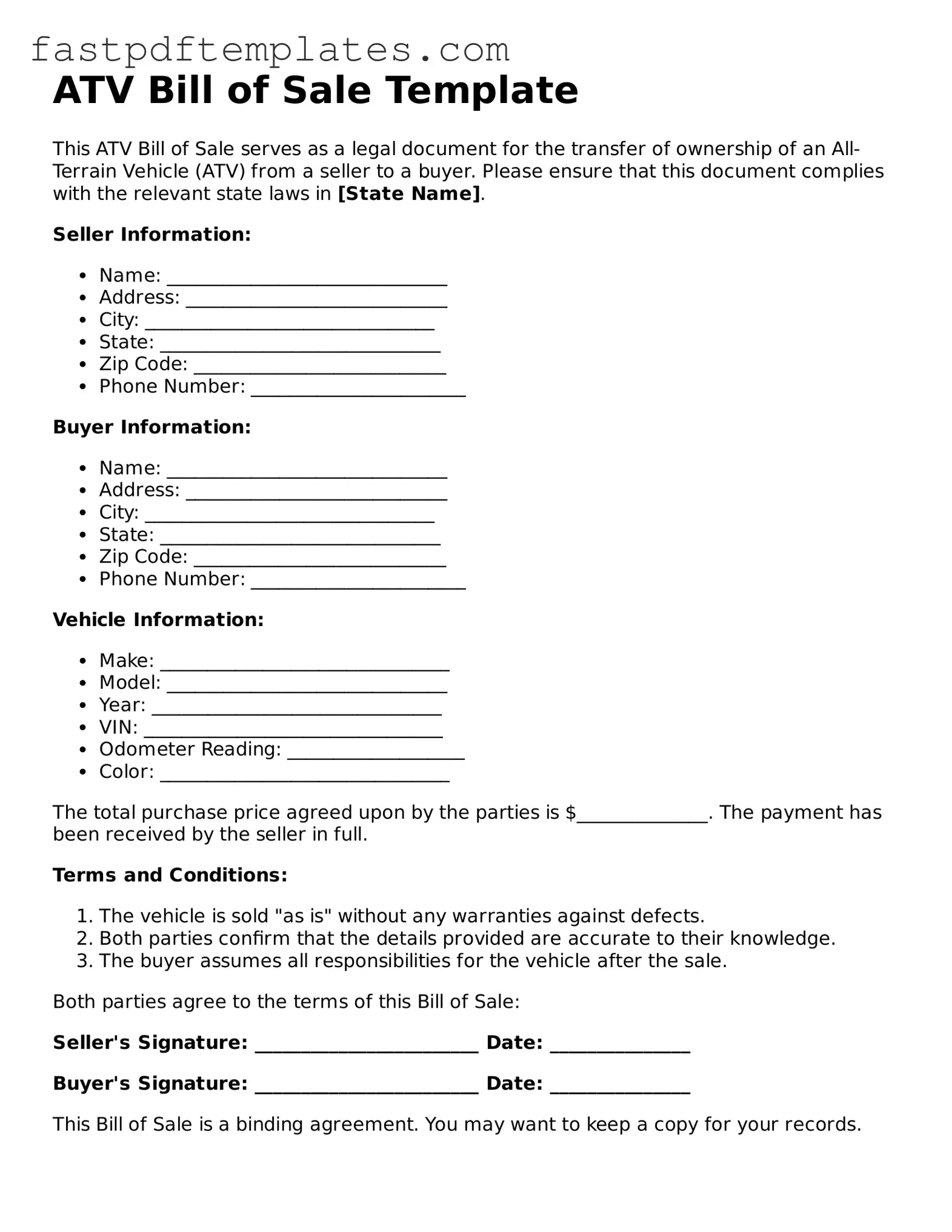ATV Bill of Sale Template
This ATV Bill of Sale serves as a legal document for the transfer of ownership of an All-Terrain Vehicle (ATV) from a seller to a buyer. Please ensure that this document complies with the relevant state laws in [State Name].
Seller Information:
- Name: ______________________________
- Address: ____________________________
- City: _______________________________
- State: ______________________________
- Zip Code: ___________________________
- Phone Number: _______________________
Buyer Information:
- Name: ______________________________
- Address: ____________________________
- City: _______________________________
- State: ______________________________
- Zip Code: ___________________________
- Phone Number: _______________________
Vehicle Information:
- Make: _______________________________
- Model: ______________________________
- Year: _______________________________
- VIN: ________________________________
- Odometer Reading: ___________________
- Color: _______________________________
The total purchase price agreed upon by the parties is $______________. The payment has been received by the seller in full.
Terms and Conditions:
- The vehicle is sold "as is" without any warranties against defects.
- Both parties confirm that the details provided are accurate to their knowledge.
- The buyer assumes all responsibilities for the vehicle after the sale.
Both parties agree to the terms of this Bill of Sale:
Seller's Signature: ________________________ Date: _______________
Buyer's Signature: ________________________ Date: _______________
This Bill of Sale is a binding agreement. You may want to keep a copy for your records.
